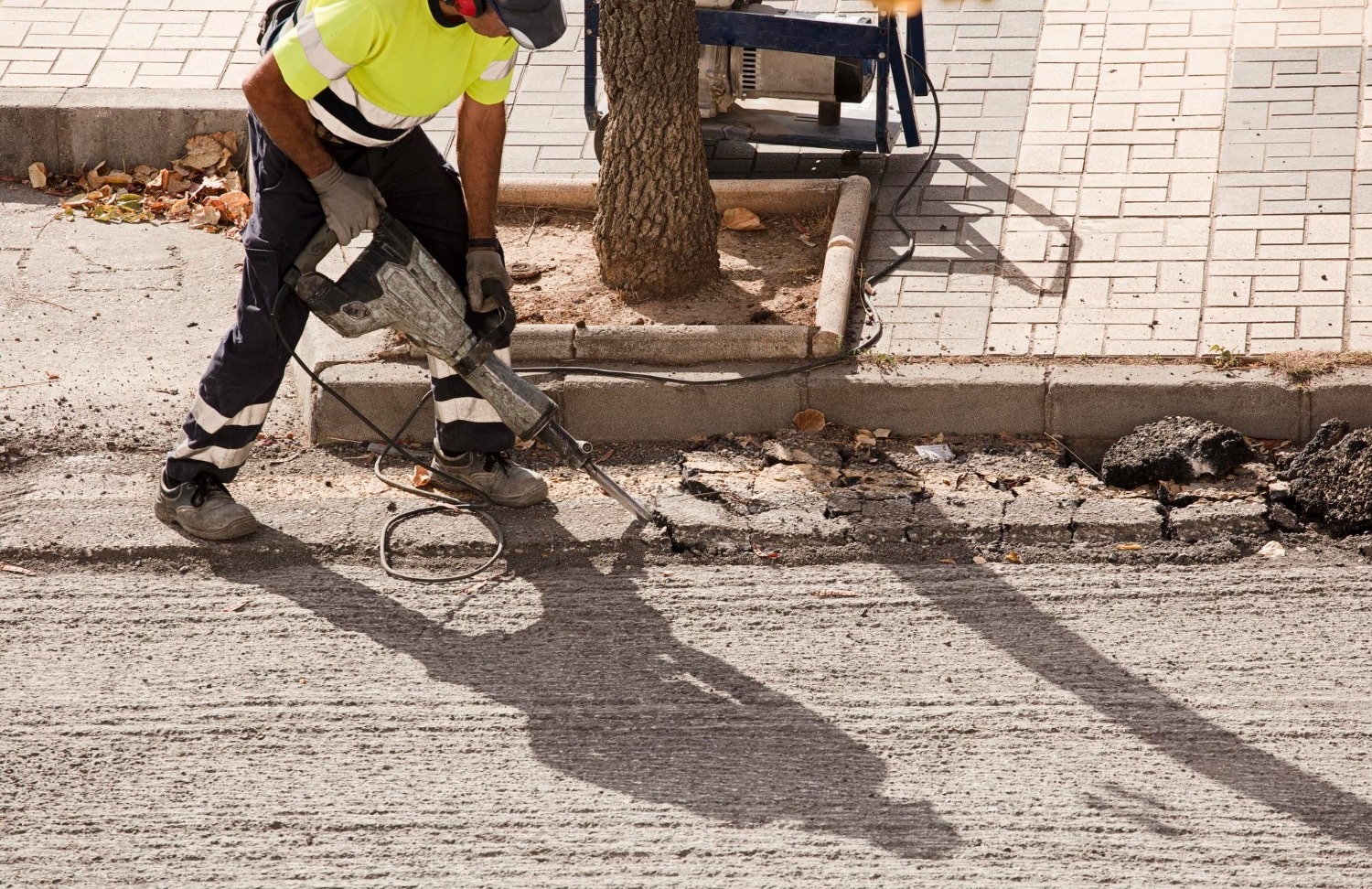Key Takeaways
- Concrete is a versatile material that can be used in a variety of ways in modern architecture.
- Concrete foundations provide a sturdy base for buildings and structures.
- Concrete walls offer strength, durability, and design possibilities.
- Concrete floors are practical, stylish, and sustainable.
- Concrete roofs can withstand harsh weather conditions and provide resilience.
The Versatility of Concrete: Shaping the Built Environment
Concrete, a ubiquitous material in the world of construction, has long been a cornerstone of modern architecture. Its versatility as a building material has allowed architects and designers to push the boundaries of what is possible, transforming the built environment around us. Concrete’s unique properties, including its strength, durability, and adaptability, have played a crucial role in the evolution of architectural design, enabling the creation of structures that are both functional and aesthetically captivating.
Throughout history, concrete has been instrumental in shaping the way we interact with and experience the built environment. From the grand, monumental structures of ancient civilizations to the sleek, contemporary skyscrapers that define the skylines of modern cities, concrete has been a constant presence, adapting to the changing needs and aspirations of architects and designers. Its diverse applications, ranging from foundations and walls to floors and roofs, have allowed for the realization of a wide array of architectural styles and forms, each showcasing the material’s remarkable versatility.
As we delve deeper into the world of modern architecture, it becomes increasingly evident that concrete is not merely a practical building material, but a canvas upon which designers can express their creative visions. The ability to mold, shape, and manipulate concrete has enabled architects to push the boundaries of what is possible, creating structures that are not only structurally sound but also visually captivating. From the sweeping curves of iconic buildings to the intricate patterns and textures that adorn concrete surfaces, the material’s potential for artistic expression is truly remarkable.

Concrete Foundations: The Bedrock of Sturdy Structures
At the heart of any well-designed structure lies a strong and reliable foundation, and concrete has long been the material of choice for this critical component of the built environment. The importance of a solid foundation cannot be overstated, as it is responsible for supporting the weight of the entire structure and ensuring its stability and longevity. Concrete’s exceptional load-bearing capabilities, combined with its durability and resistance to environmental factors, make it an ideal choice for foundation construction.
As the foundation of a building, concrete plays a crucial role in the overall structural integrity of the structure. Its ability to withstand heavy loads and distribute them evenly across the ground ensures that the building remains firmly grounded, even in the face of challenging soil conditions or natural disasters. Advancements in concrete foundation design and construction have further enhanced the material’s capabilities, allowing architects and engineers to create foundations that are not only strong but also adaptable to the unique demands of each project.
The evolution of concrete foundation design has been driven by a constant pursuit of innovation and efficiency. From the development of reinforced concrete to the incorporation of advanced construction techniques, the industry has continuously sought to push the boundaries of what is possible. This has led to the creation of foundation systems that are not only more robust but also more cost-effective and environmentally friendly, making concrete an increasingly attractive choice for builders and developers alike. As the built environment continues to evolve, the role of concrete foundations in supporting the structures of the future will only become more crucial, ensuring the stability and longevity of our architectural achievements.

Concrete Walls: Strength, Durability, and Design Possibilities
Concrete walls have long been a staple in the world of modern architecture, offering a unique combination of structural integrity, fire-resistance, and design versatility. The inherent strength and durability of concrete make it an ideal material for the construction of walls, ensuring that the structures they support can withstand the test of time and the elements.
Beyond its practical benefits, concrete walls have also become a canvas for architectural expression, allowing designers to explore a wide range of aesthetic possibilities. The ability to mold, shape, and texture concrete has enabled the creation of walls that are not only functional but also visually captivating, seamlessly integrating with the overall design of a building. From the sleek, minimalist lines of contemporary structures to the intricate patterns and textures that adorn more traditional designs, concrete walls have become a defining feature of modern architecture.
Innovative techniques in concrete wall construction have further expanded the design possibilities of this versatile material. The use of specialized formwork, advanced casting methods, and the incorporation of reinforcement materials have allowed architects to push the boundaries of what is possible, creating walls that are not only structurally sound but also visually striking. This has led to the emergence of a new generation of concrete walls that are not merely functional barriers but rather integral components of the architectural experience, contributing to the overall aesthetic and spatial qualities of a building.
As the demand for sustainable and energy-efficient construction continues to grow, the role of concrete walls in modern architecture has become increasingly important. The thermal properties of concrete, combined with its fire-resistance and durability, make it an attractive choice for builders and developers seeking to create structures that are both environmentally responsible and long-lasting. By leveraging the unique qualities of concrete, architects and designers can create walls that not only enhance the visual appeal of a building but also contribute to its overall energy efficiency and resilience.

Concrete Floors: Practical, Stylish, and Sustainable
| Application | Benefits of Concrete |
|---|---|
| Foundations | Durable, resistant to moisture and pests, can withstand heavy loads |
| Walls | Fire-resistant, soundproof, energy-efficient, low maintenance |
| Floors | Strong, durable, easy to clean, can be polished or stained for decorative effect |
| Countertops | Heat-resistant, scratch-resistant, customizable in terms of color and texture |
| Outdoor Spaces | Weather-resistant, can be stamped or stained for decorative effect, low maintenance |
Concrete floors have long been a staple in the world of modern architecture, offering a unique combination of practicality, style, and sustainability. As a versatile flooring material, concrete has the ability to adapt to a wide range of design preferences and functional requirements, making it a popular choice among architects, designers, and homeowners alike.
One of the primary advantages of concrete floors is their durability and longevity. Concrete is an exceptionally resilient material, capable of withstanding heavy foot traffic, furniture placement, and even the occasional spill or impact. This makes it an ideal choice for high-traffic areas, such as commercial spaces, industrial facilities, and even residential homes. Additionally, concrete floors require minimal maintenance, making them a cost-effective and low-hassle option for building owners and occupants.
Beyond its practical benefits, concrete floors have also become a canvas for creative expression in the world of interior design. The ability to customize the color, texture, and pattern of concrete has allowed designers to transform this utilitarian material into a visually striking element that can enhance the overall aesthetic of a space. From the sleek, polished look of a contemporary loft to the warm, textured appeal of a rustic farmhouse, concrete floors can be tailored to suit a wide range of design styles and preferences.
As the demand for sustainable and environmentally-friendly building practices continues to grow, the appeal of concrete floors has only increased. Concrete is a highly durable and long-lasting material, reducing the need for frequent replacement and minimizing the environmental impact of construction and renovation projects. Additionally, the thermal properties of concrete can contribute to the energy efficiency of a building, helping to regulate indoor temperatures and reduce the reliance on energy-intensive heating and cooling systems.
By embracing the versatility and sustainability of concrete floors, architects and designers are able to create spaces that are not only visually appealing but also practical and environmentally responsible. As the built environment continues to evolve, the role of concrete floors in modern architecture will only become more prominent, as builders and developers seek to create structures that are both aesthetically pleasing and environmentally conscious.





